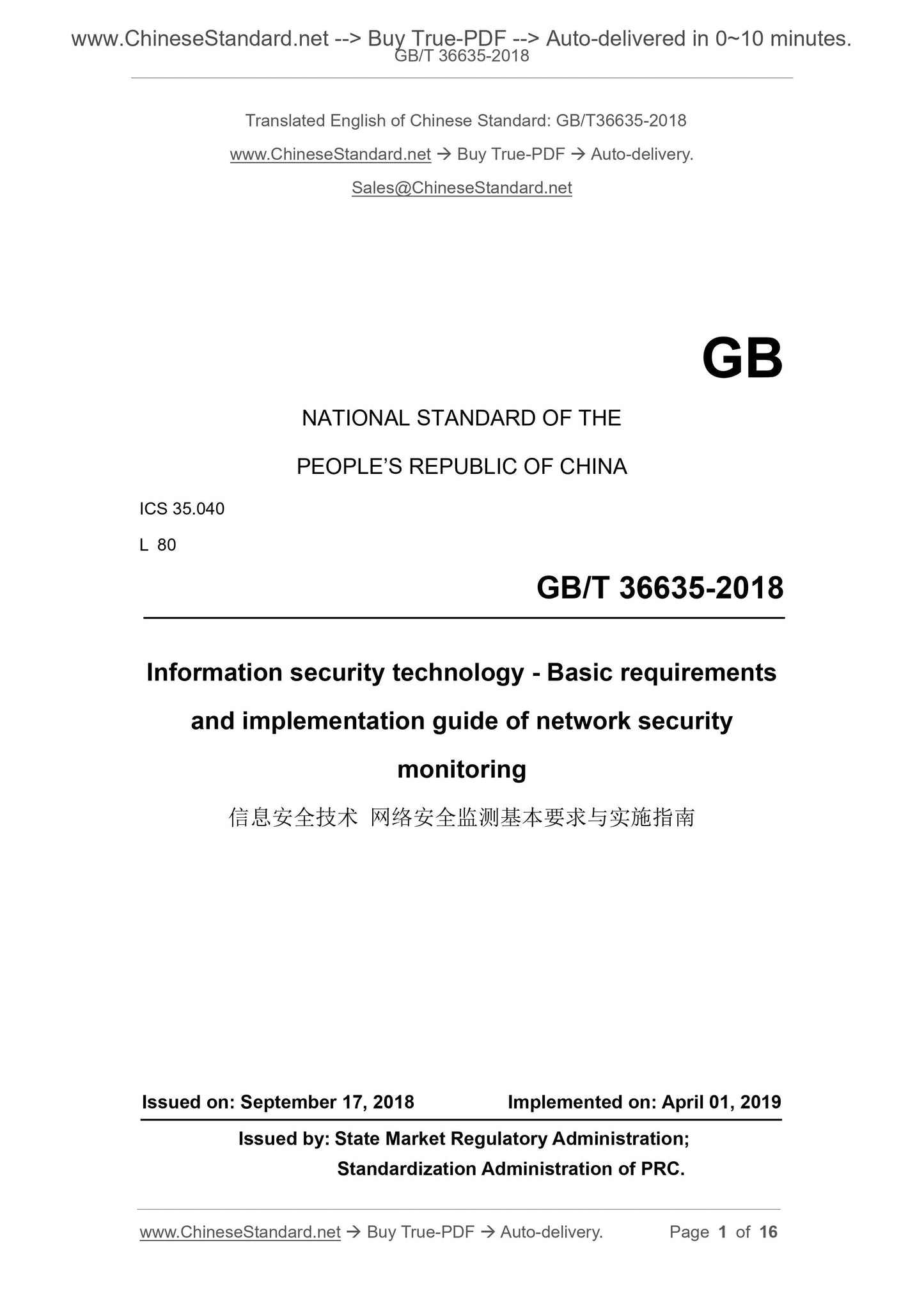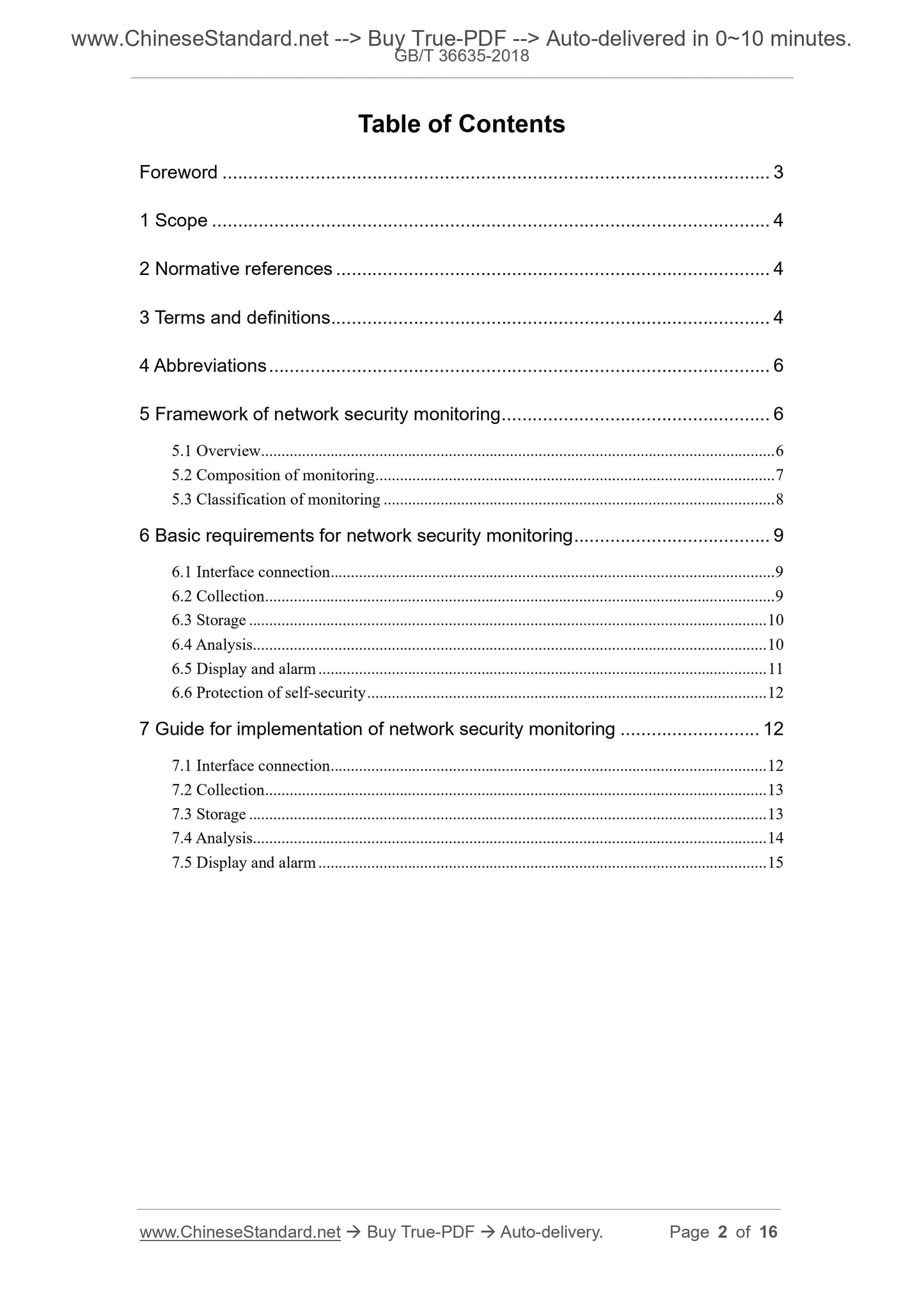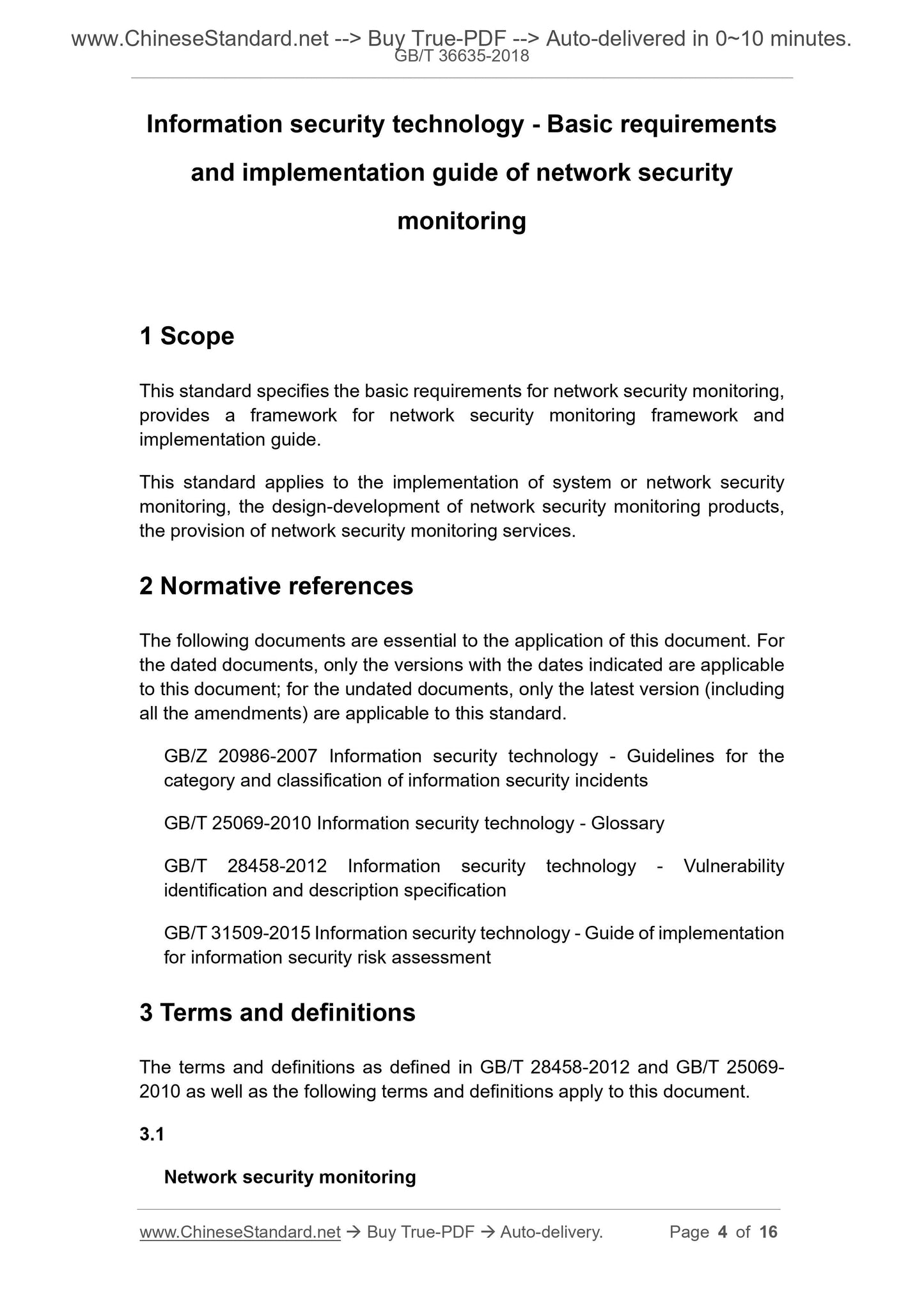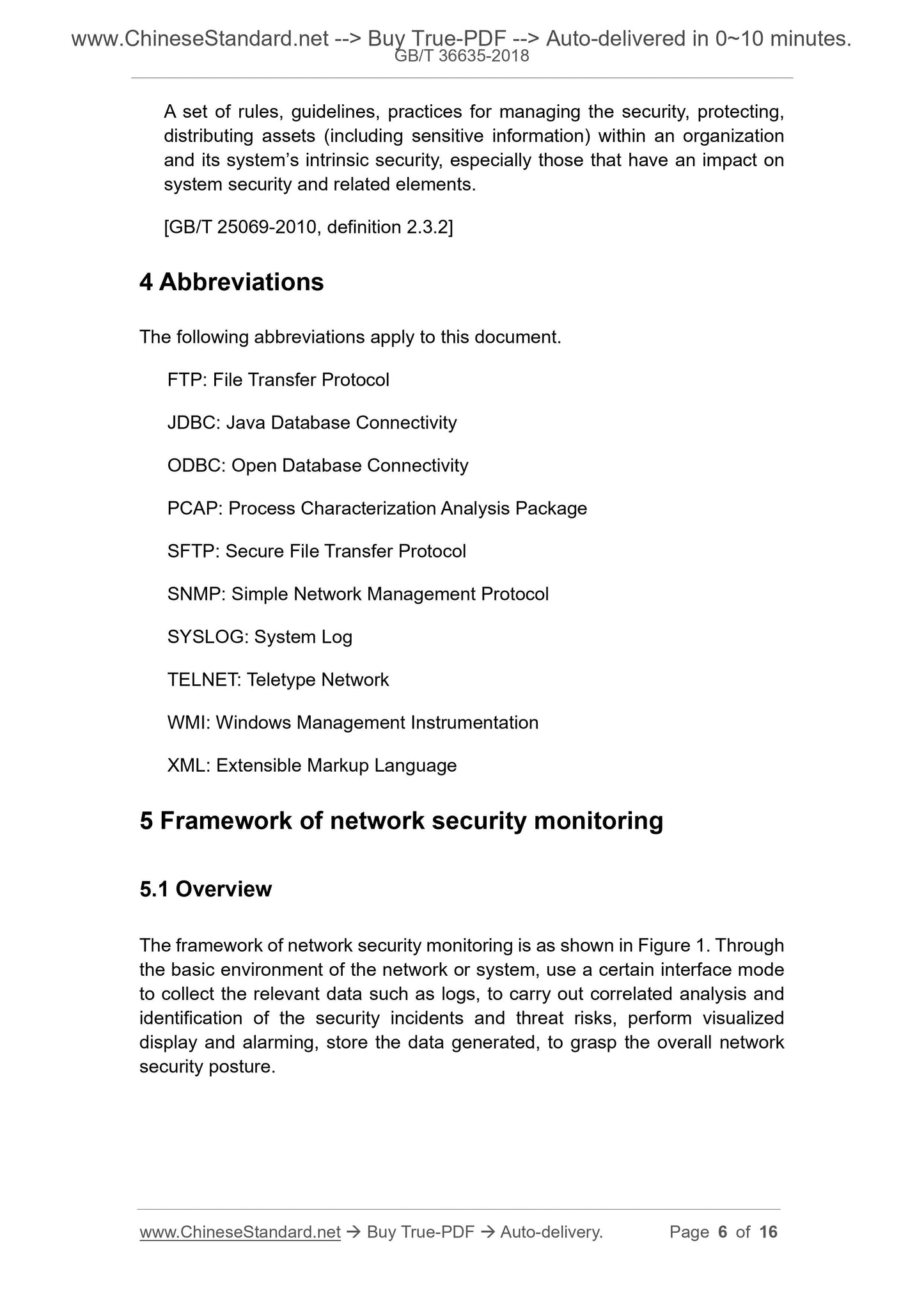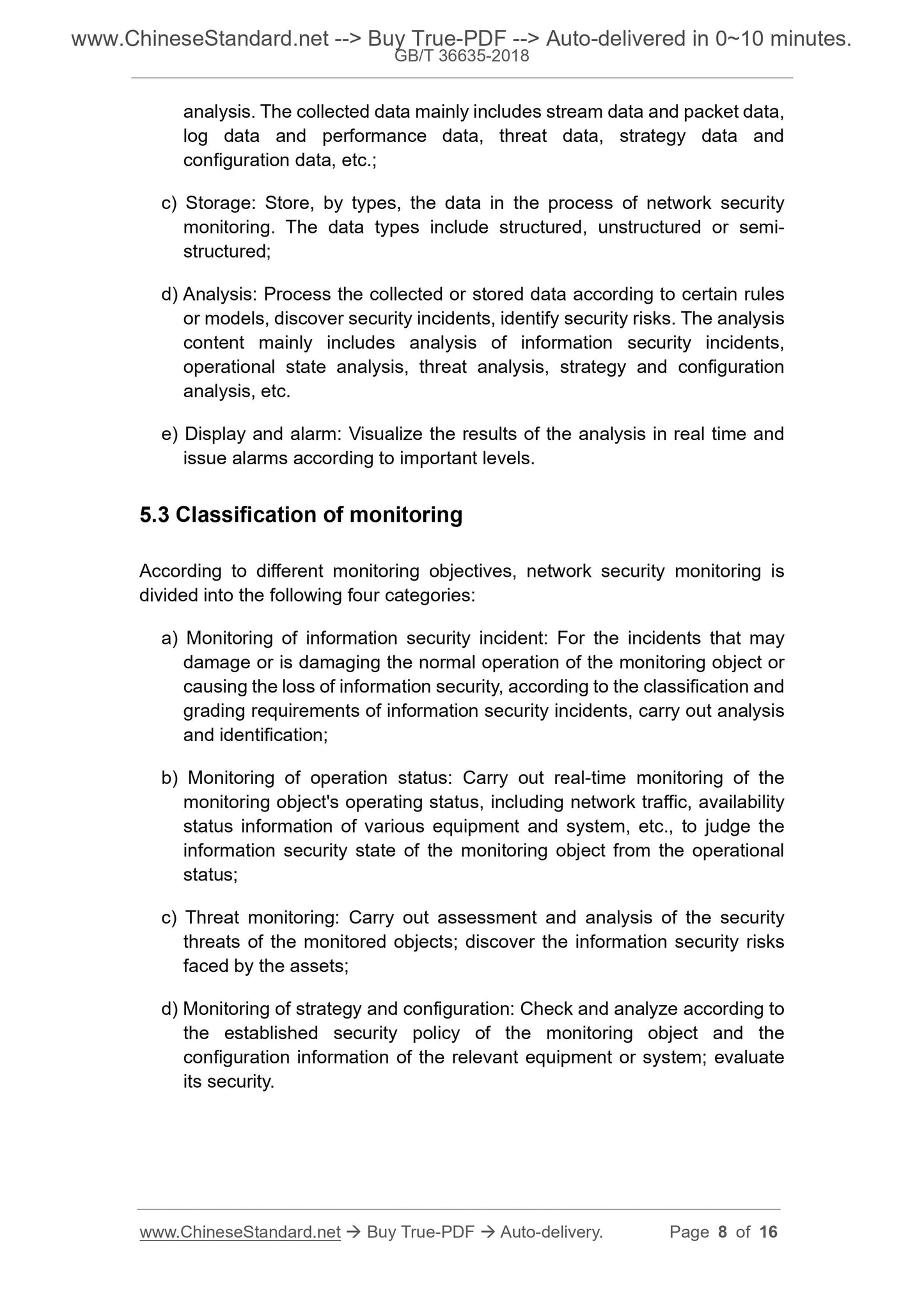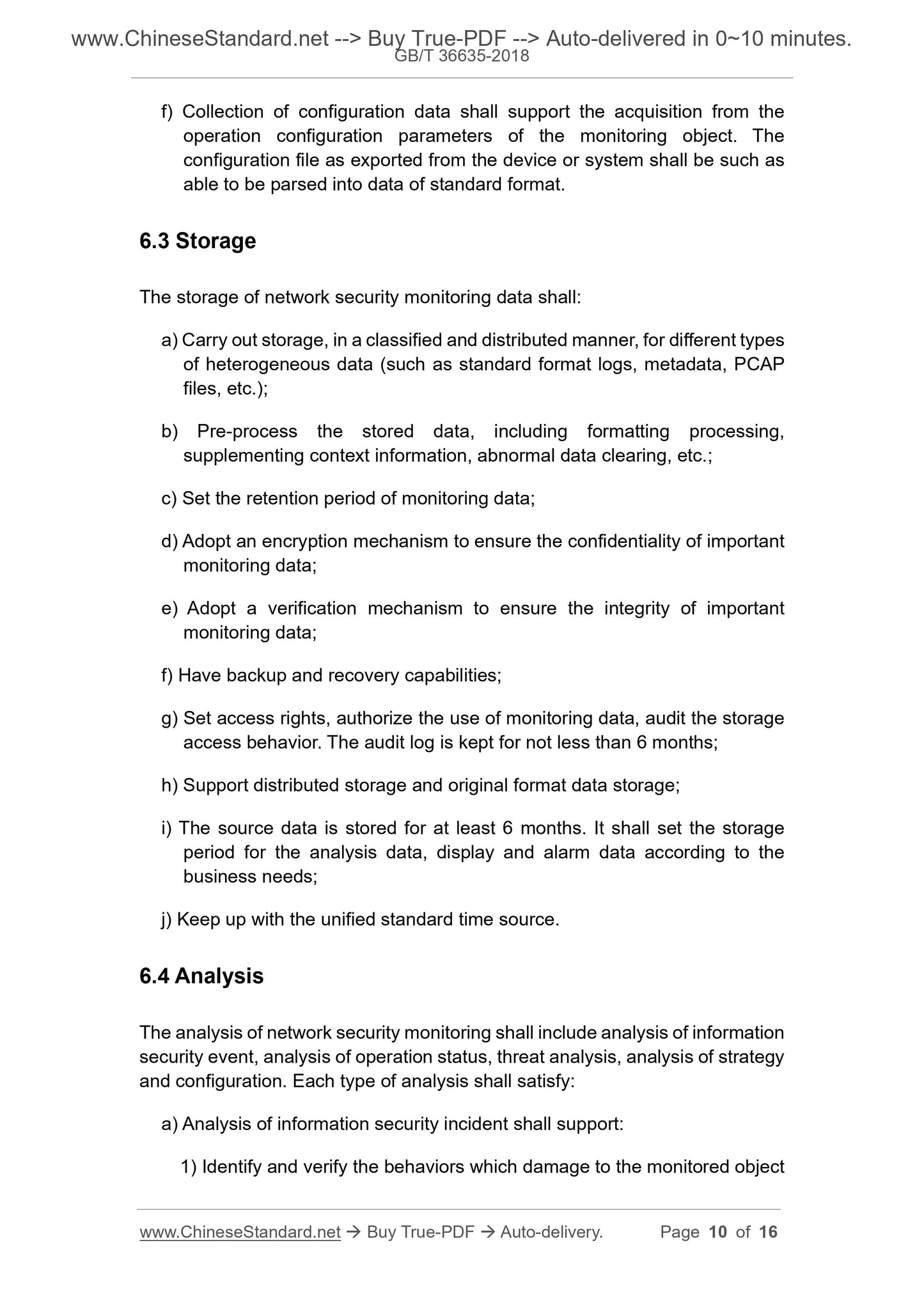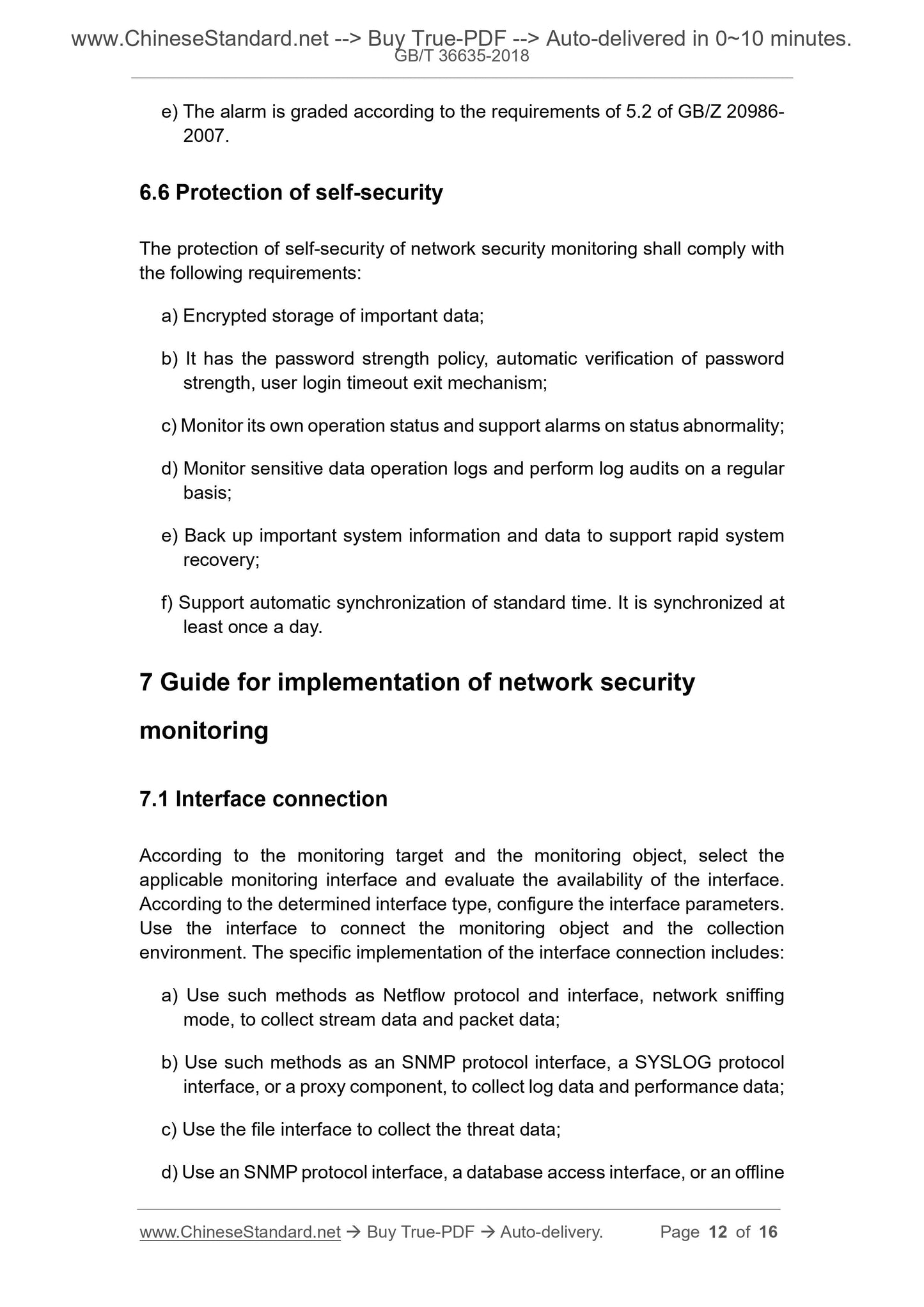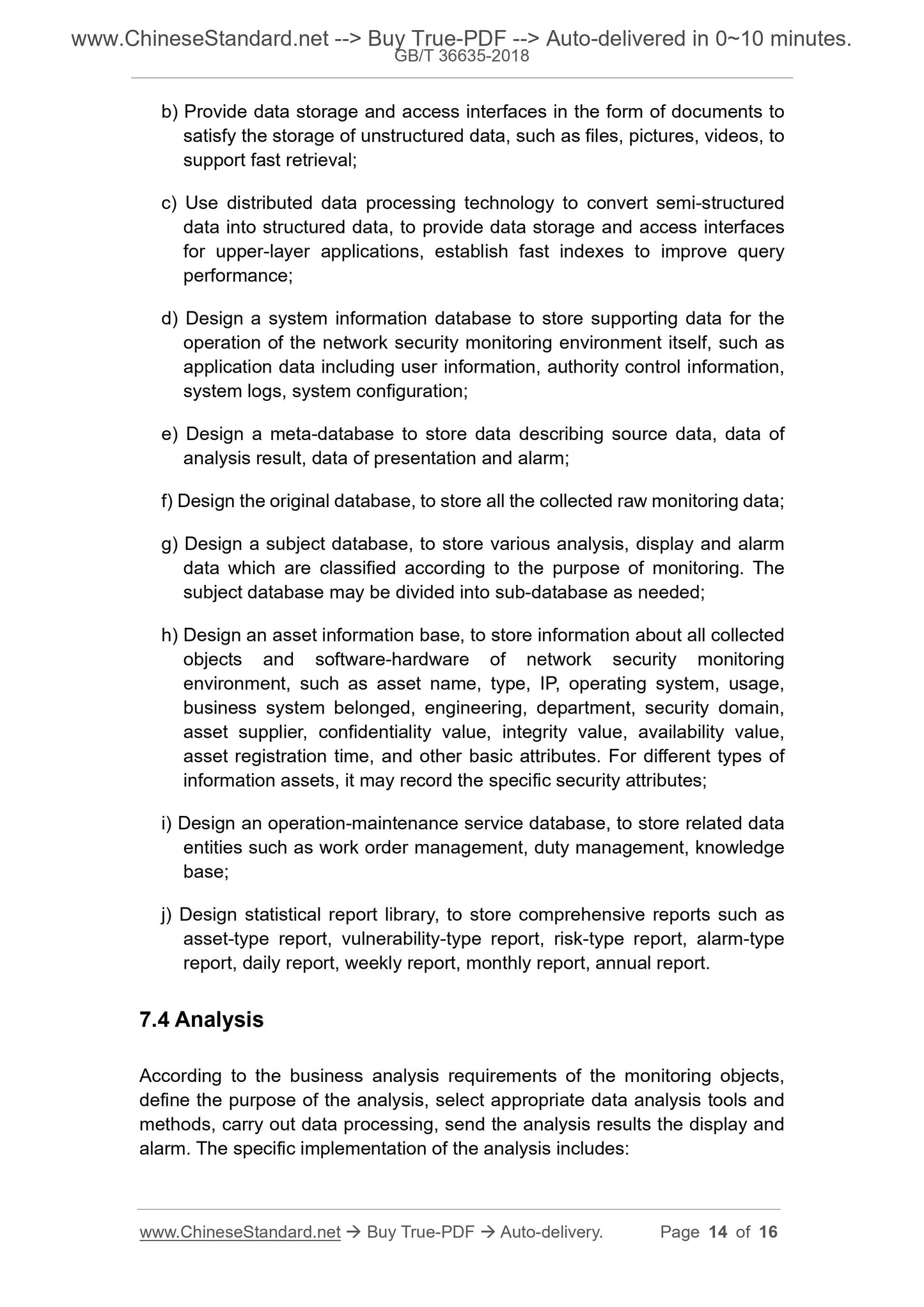1
/
of
8
www.ChineseStandard.us -- Field Test Asia Pte. Ltd.
GB/T 36635-2018 English PDF (GB/T36635-2018)
GB/T 36635-2018 English PDF (GB/T36635-2018)
Regular price
$130.00
Regular price
Sale price
$130.00
Unit price
/
per
Shipping calculated at checkout.
Couldn't load pickup availability
GB/T 36635-2018: Information security technology - Basic requirements and implementation guide of network security monitoring
Delivery: 9 seconds. Download (and Email) true-PDF + Invoice.Get Quotation: Click GB/T 36635-2018 (Self-service in 1-minute)
Newer / historical versions: GB/T 36635-2018
Preview True-PDF
Scope
This standard specifies the basic requirements for network security monitoring,provides a framework for network security monitoring framework and
implementation guide.
This standard applies to the implementation of system or network security
monitoring, the design-development of network security monitoring products,
the provision of network security monitoring services.
Basic Data
| Standard ID | GB/T 36635-2018 (GB/T36635-2018) |
| Description (Translated English) | Information security technology - Basic requirements and implementation guide of network security monitoring |
| Sector / Industry | National Standard (Recommended) |
| Classification of Chinese Standard | L80 |
| Classification of International Standard | 35.040 |
| Word Count Estimation | 10,117 |
| Date of Issue | 2018-09-17 |
| Date of Implementation | 2019-04-01 |
| Issuing agency(ies) | State Administration for Market Regulation, China National Standardization Administration |
Share
